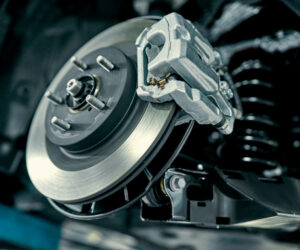The ports of Long Beach and Los Angeles (LA) recently announced their approval of the 2017 Clean Air Action Plan (CAAP) update. The plan calls for all terminal equipment to reach zero-emissions standards by 2030. The update also introduces new greenhouse gas (GHG) standards to reduce the ports’ impact on global warming and climate change. Both ports have agreed to reduce GHGs by 40 percent below 1990 standards by 2030 and 80 percent below those levels by 2050. The plan’s estimates place costs at anywhere from $8.5 billion to $14 billion.

The CAAP update covers more than port equipment. It also affects vehicles entering these ports, including trains, ships, and trucks. Drayage firms are responsible for moving freight from the ports to nearby warehouses and distribution centers. Smaller companies and independent owner-operators would bear the brunt of the new truck emissions regulations.
Clean Trucks Program
The LA and Long Beach ports implemented the Clean Trucks Program in 2008 to phase out older trucks, which had higher GHG emissions than those of newer technology. State regulations already addressed the issue, but port area vehicles were at 100% compliance by January 2012, two years ahead of state initiatives. As part of CAAP, the Clean Trucks Program also received an update. The new regulations are as follows:
- As of mid-2018, new trucks entered on the port Drayage Truck Registry must have an engine model year of 2014 or later.
- By 2023, or as soon as the State’s near-zero emission standard for heavy-duty trucks takes effect, all new trucks added to the registry must meet or exceed a near-zero standard.
- As of 2023, trucks that do not meet the near-zero standard truck emissions regulations will not officially pay fines. However, the ports will levy a rate against all entering heavy-duty trucks but will waive the surcharge for vehicles in compliance.
- By 2035, trucks must meet zero-emissions standards or their equivalent to be exempt from port entry rates.
Problems with the New Diesel Truck Emissions Standards
Improving air quality is a praiseworthy goal. According to data from air quality monitoring agencies, residents who live nearest the ports experience higher than normal health risks, including cancer and asthma-related hospitalization. The 2006 CAAP was a decent return on investment; for about $2 billion, smog-causing nitrogen and sulfur emissions dropped by 50% and 97%, respectively. Port-related DPM emissions, which are linked to cancer risks and other negative health effects, have dropped by 84% since 2005.
Financial Planning or Wishful Thinking?
However, the 2017 CAAP is seven times the initial budget, ringing in at a hefty $14 billion. Language in the final draft of the agreement indicates the ports and private industry must cover any costs not subsidized by the state or federal government. Given the aggressive competition and limited funding pool available for environmental improvement grants, government assistance is not likely. Furthermore, the document also admits that “a large portion” of the incurred costs will be necessary during the initial 5-7-year implementation period.
Future Technology Requirements
Another major flaw in the plan is the fact that much of the technology required for compliance does not exist yet. For example, a diesel truck with near-zero emissions does not yet exist. The only near-zero emissions trucks available run on natural gas. The CAAP document projects that near-zero diesel truck emissions will be achievable by 2020.
Zero emissions trucks are not available either. These electric trucks would run on battery power and would require special charging stations to refuel. Although this alternative fuel source would be much cleaner, the engines would likely sacrifice horsepower for lower emissions.
The Trucking Industry’s Reaction to the Clean Air Action Plan
The trucking industry’s take on CAAP is mixed at best. Even those in favor of reducing emissions are hesitant. In a November 2nd interview with Truckinginfo.com, Harbor Trucking Association Executive Director Weston LaBar took a circumspect approach to the issue. “While we appreciate the ports’ approach,” LaBar said, “we feel the milestones are very ambitious and will be hard to meet.”
Impact on Small Trucking Companies
This is especially true for smaller trucking firms, which cannot always afford vehicle upgrades. For example, owner-operators can typically get affordable financing for trucks that are 4-5 years old. Essentially, they would purchase a vehicle and then need to upgrade just a few years later.
Peter Schneider, Executive Vice President of Drayage firm TGS Transportation, INC., is familiar with that process. His firm bought new trucks from 2008-2010 to comply with port regulations. This newest regulation will mean another round of upgrades.
Schneider notes that replacement costs rise with cleaner trucks. His mid-sized firm can afford replacements, “but only at certain rate levels.” He estimates that rate levels would have to increase by 20-30 percent, and “every penny” goes to owner-operators for them to afford new trucks that meet emissions standards.
Other transportation and shipping experts predict that rising costs will divert shippers away from the Southern California ports to less expensive seaports in Canada, Mexico, the East Coast, and the Gulf states.
The Bottom Line
Ultimately, the fate of CAAP may be decided in court. Governor Jerry Brown recently signed Senate Bill 1 into law. In addition to increasing fuel taxes and vehicle fees, the legislation contains a provision that favors truckers. The bill prevents the state from requiring big rig replacements or retrofits until the vehicle reaches 18 years of service or 800,000 miles. However, an Air Resources Board spokesperson asserts that Senate Bill 1 does not prevent ports from taking measures to protect surrounding communities from the effects of pollution.



 As the saying goes, if you are unable to see the truck mirrors, the truck driver cannot see you. When a big rig cannot see you, th...
As the saying goes, if you are unable to see the truck mirrors, the truck driver cannot see you. When a big rig cannot see you, th...

